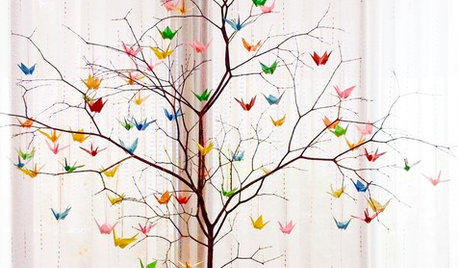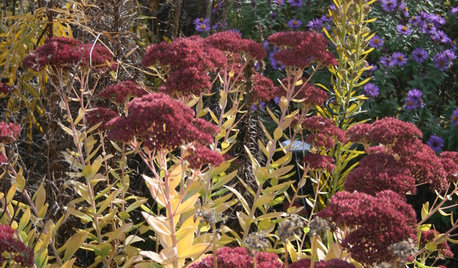Rust nightmare on apples--now spreading
lpinkmountain
15 years ago
Related Stories

EDIBLE GARDENSHow to Add an Apple Tree to Your Edible Garden
Readily available, beautiful and fragrant, apple trees offer four-season interest along with crisp, juicy fruit
Full Story
FUN HOUZZ14 Things You Need to Start Doing Now for Your Spouse’s Sake
You have no idea how annoying your habits at home can be. We’re here to tell you
Full Story
GARDENING GUIDESHerb Garden Essentials: Grow Your Own Delicious Mint
Pull out a pot for this one. Mint's spreading habit and hard-to-kill nature can be a blessing — if you're properly prepared
Full Story
MOST POPULARHow Bluetooth 4.0 Will Change Remote Control
Manage lights, TV, refrigerators and more through your phone or tablet when the latest wireless technology rolls into all your home devices
Full Story
MOST POPULARHouzzers Deck the Halls
From traditional to quirky to innovative, readers show their Christmas tree style
Full Story
ACCESSORIES12 Amazing Reuses for Quirky Vintage Items
The best things in life are free — or nearly free. Hit the flea market or forgotten storage and check out these ideas for clever home decor
Full Story
MOST POPULARBlast Decluttering Roadblocks Once and for All
Change your thinking to get the streamlined, organized home of your dreams
Full Story
GARDENING GUIDES8 Perennials for Great Fall Color
Trees haven't cornered the market on autumn splendor. Add these flowering perennials for a foliage sight to behold
Full Story
MOST POPULARThe Unexpected Color That Goes With Everything
Move over, beige. Green is staking its claim as the freshest neutral around
Full Story
FALL GARDENING7 Reasons Not to Clean Up Your Fall Garden
Before you pluck and rake, consider wildlife, the health of your plants and your own right to relax
Full StoryMore Discussions







jean001
stompede
Related Professionals
Graham Landscape Architects & Landscape Designers · Marco Island Landscape Architects & Landscape Designers · Port Royal Landscape Architects & Landscape Designers · Simi Valley Landscape Architects & Landscape Designers · Elmhurst Landscape Contractors · Firestone Landscape Contractors · Fort Payne Landscape Contractors · Holland Landscape Contractors · Lake Saint Louis Landscape Contractors · Las Vegas Landscape Contractors · Lees Summit Landscape Contractors · Watertown Landscape Contractors · Golden Valley Landscape Contractors · Redding Swimming Pool Builders · Santa Paula Swimming Pool BuildersKimmsr
lpinkmountainOriginal Author
stompede
lpinkmountainOriginal Author